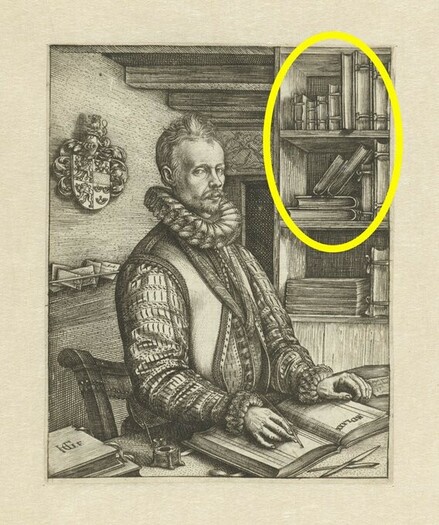Daniel Bellingradt :mastodon: · @dbellingradt
2472 followers · 613 posts · Server mastodon.socialIn the European past, storing bound books was often done backwards, as experts of early modern #bookhistory know. The difference to nowadays trends like #backwardsbooks is that early modern users of books had many reasons to do this beyond fashion: mostly when books were shelved fore-edge outwards the owner tried to avoid damage of the spine. And because spine titles are yet uncommon in 1580 (in fact until the 18th century), this was the common way to store your paper book.
5/5
Mark Saltveit · @taoish
117 followers · 464 posts · Server mastodonapp.uk@dbellingradt #backwardsbooks? I'm intrigued but not sure what you mean. Spine facing wall, filled with palindromes, written from right to left?
Daniel Bellingradt · @dbellingradt
2129 followers · 299 posts · Server mastodon.socialBroadsheets were often glued or pinned to walls, as this detail highlights. Here, this paper #broadsheet is positioned under a small bookshelf full of paper books.
Bonus for experts of early modern #bookhistory: more evidence of #backwardsbooks.
3/x
#broadsheet #bookhistory #backwardsbooks
Daniel Bellingradt :mastodon: · @dbellingradt
2392 followers · 529 posts · Server mastodon.socialBroadsheets were often glued or pinned to walls, as this detail highlights. Here, this paper #broadsheet is positioned under a small bookshelf full of paper books.
Bonus for experts of early modern #bookhistory: more evidence of #backwardsbooks.
3/8
#broadsheet #bookhistory #backwardsbooks

